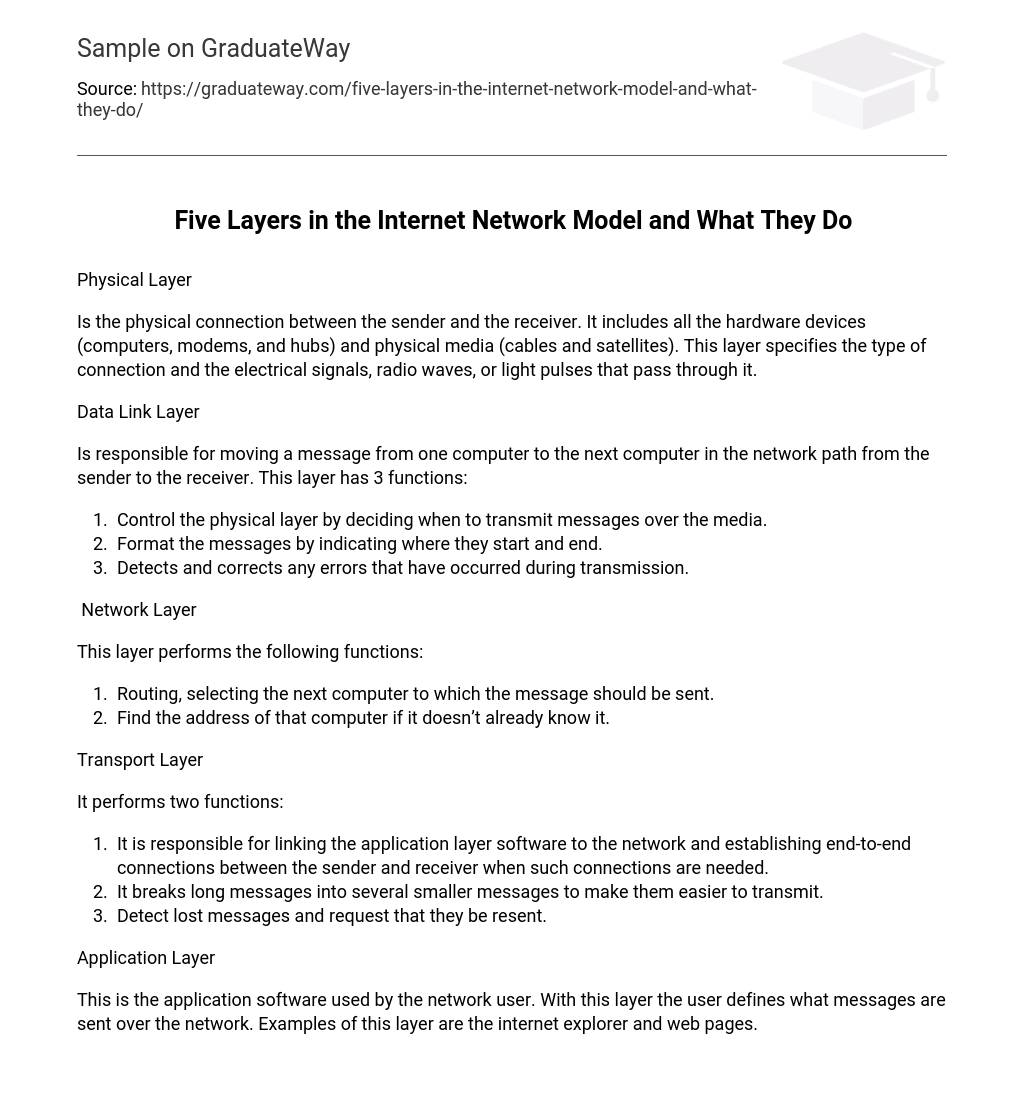Physical Layer
The physical connection and transmission methods between the sender and receiver are established through hardware devices (such as computers, modems, and hubs) and physical media (such as cables and satellites). This layer determines the type of connection, whether it involves electrical signals, radio waves, or light pulses.
Data Link Layer
The primary function of this layer is to transmit a message from the sender’s computer to the receiver’s computer over the network path. This layer is responsible for three functions.
- Control the physical layer by deciding when to transmit messages over the media.
- Format the messages by indicating where they start and end.
- Detects and corrects any errors that have occurred during transmission.
Network Layer
The functions performed by this layer are:
This layer performs the following functions:
- Routing, selecting the next computer to which the message should be sent.
- Find the address of that computer if it doesn’t already know it.
Transport Layer
It has two purposes:
- It is responsible for linking the application layer software to the network and establishing end-to-end connections between the sender and receiver when such connections are needed.
- It breaks long messages into several smaller messages to make them easier to transmit.
- Detect lost messages and request that they be resent.
Application Layer
This layer refers to the application software utilized by the network user, wherein the user specifies the messages to be transmitted across the network. Illustrations of this layer include internet explorer and web pages.





